Estimated reading time: 9 minutes
The best goats for off-grid living are not only great weed eaters but also hardy enough to survive on low-quality brush and rugged terrain while still producing quality meat and ample milk.
Before you whip out your wallet and start buying goats to cultivate a herd, you must decide which of the benefits of goat ownership are the most important and how you plan on raising the herd. All goats will offer meat, dairy, and weed eating services, but some excel at only one or two of those attributes.
Want to save this post for later? Click Here to Pin It On Pinterest!
Ask yourself these questions:
- Will the goats be kept inside of a pen, free-range, or tied out in specific spots to help cut back the woods and serve as lawnmowers?
- How much money is available to build a pen and shelter? This figure will determine how many goats you should purchase.
- If raising meat goats, will they need to be wintered over?
- How much milk do you need to drink and make dairy products?
- What will you do with the excess milk?
- Will you be breeding the goats?
- Will you sell the kids or keep them to work on, and provide for, the off-grid homestead?
Goats 101
You should keep only one intact male goat in a herd. An intact male goat will attack other intact males, even their own offspring. Castrated male goats can almost always live peacefully, even in great numbers, with intact male goats.
Here are a few terms you should familiarize yourself with:
- Baby goats are called “kids.”
- When a pregnant goat gives birth it is called “kidding.”
- Your female goats are called doelings
- Female goats are referred to as a doe if she hasn’t given birth, or a nanny if she has.
- A male goat is called a billy or a buck.
- Young male goats are called bucklings.
- Castrated goats are called wethers.
- A female goat typically has only one kid during her first pregnancy but two (sometimes three) in subsequent pregnancies.
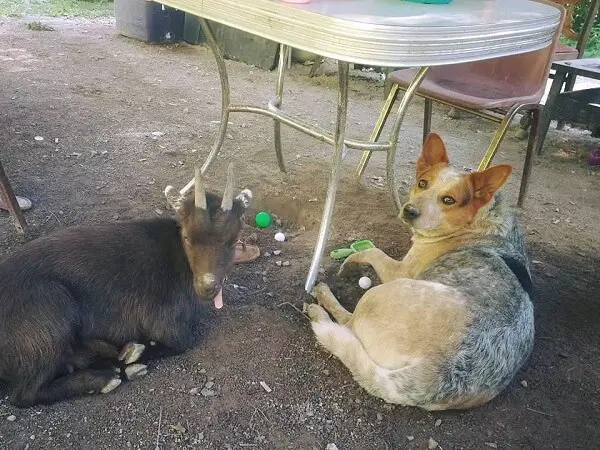
Domestic dogs are typically among the largest threat to goats. Pearl and Jovie (seen above) are a rare exception to the rule. They grew up together and buddied around our homestead side-by-side constantly until Pearl got a mate.
Cost Of Buying And Raising Goats
A typical goat usually ranges in price from $85 to $200. If you are purchasing a heritage breed goat or a show-quality or purebred goat, the average cost could increase to approximately $400 each.
The best time to buy goats is in November just before farmers or breeders have to purchase extra hay and straw to prepare to winter them over. Buying goats after the 4-H weigh-in date can also be a great time to find a good deal on goats that are healthy but did not make weight for various reasons.
Although the cost would be higher and the search likely longer to find heritage breed goats, they are still highly recommended for off-grid living. These original breeds of goats are typically far hardier than goats purchased from commercial suppliers who have bred goats to put on weight quickly for the sake of increasing their sale price.
Heritage breed goats also tend to withstand environmental challenges like severe weather and low-quality pasture area because the individuals who breed them largely uses a hands-off approach and allow them to fully embrace and hone their natural tendencies from day one.
Cheaper Goats
Sometimes you can find a Pygmy, Nigerian Dwarf, or mixed breed goat cheaper than the average prices noted above. There are two potential drawbacks to garnering goats in this manner.
First, the goat may have been treated as a farm pet until a child outgrew interest in the animal. A farm pet goat often imprints on humans and loses a lot of the herd mentality it needs to truly be a useful goat on the off-grid homestead. It is far too used to being cuddled and handfed to have much interest in eating weeds or mating.
Second, if the goat has always been pen kept, it too will have lost a lot of its natural food browsing instincts and can be far too finicky to munch on low-quality weeds and brush to help clear the property.
Our Pearl, shown in the photos above, had absolutely no inclination at all to eat a single weed. She had been pampered and living in a pen her whole life, largely by herself. Once she got a mate who had always browsed for his food, she learned how to be a goat and started earning her keep around our rural homestead.
Grain
There are usually enough weeds for goats to browse for part of their food during the winter months, but you will still have to supplement their diets with grain, depending upon your location. A 50-pound bag of all stock or goat feed usually costs around $9 to $20 per bag.
Hay
Goats are ruminant animals and must have access to hay during the winter months to keep the four-chambers of their stomach functioning properly. A standard goat typically eats up to five pounds of hay on a daily basis. A Nigerian Dwarf of Pygmy goat eats approximately two and a half pounds of hay per day.
Straw
Straw (or sawdust shavings) will need to be placed inside a goat’s living quarters during the winter months or before kidding to help keep it warm. Generally, straw costs around $3 per bale. Straw will need to be raked out (it makes great compost) and replaced at least once per month to avoid mildew and disease from the manure.
Farrier
Goat hooves will need trimmed about every eight weeks if they are not free-ranging and rubbing their hooves down naturally from extensive walking and climbing on rocks. The average farrier charge for trimming a goat’s hooves is about $25. If you purchase a nipper and file from an agriculture store (for about $30 total) you can learn how to trim the goat’s hooves yourself.
Vet
Learning how to care for your goat naturally, using herbs and medicinal flowers grown on the off-grid homestead, can help prevent illness, as will proper husbandry techniques. Goat bloat is a common occurrence and can be deadly.
Homemade and fairly natural goat bloat remedies are readily available online. I have had the quickest and most success using goat bloat remedies that include cooking oil (I use olive or coconut) and peppermint essential oil.
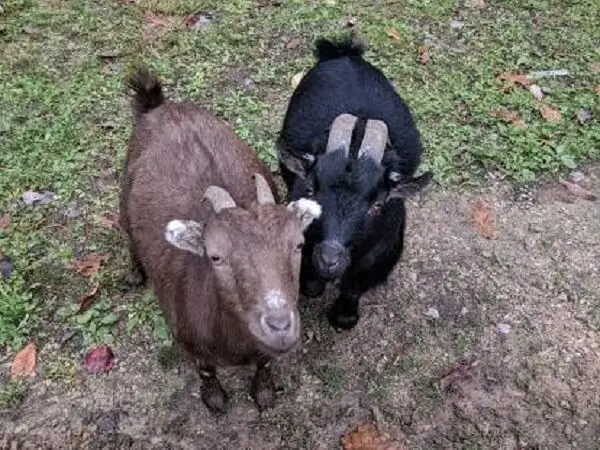
This article lists the 10 best goat breeds, but we're going to break them down into two groups: dairy goats and meat goats.
Top 5 Dairy Goats For Off-Grid Living
Goat milk is a lot sweeter than cow milk, it has a buttermilk-like taste. Plus, goat milk has a higher Vitamin A, thiamin, and riboflavin content than cow’s milk. Some folks who have lactose issues can drink it, but be careful.
1. Alpine – This goat breed is often used for dairy milking on both homesteads and in commercial production facilities. Alpine goats produce more than 2,000 pounds of milk per year, on average.
2. Nigerian Dwarf – This breed produces up to two and a half quarts of milk per day. Because of their small size, the pen building height, width, and expense, as well as room for them to roam, are reduced when compared to the same needs for a standard size goat herd.
3. Nubian – This goat breed produces between five to seven quarts of milk per day during her peak production stage. They hail from a warm climate area and are hardy during the summer months.
4. Toggenburg – This dairy goat breed commonly produces between three to five quarts of milk daily. They are also hardy in colder climates.
5. La Mancha – These cold climate goats typically produce between four to six quarts of milk per day.
The top five dairy goats for off-grid living are also quality browsers. Unless raised in a manner that thwarts their natural foraging habits, these goat breeds will help earn their keep on an off-grid homestead by clearing brush, eating the grass, and even preventing some small tree growth in areas where they are not wanted.
Top 5 Meat Goats For Off Grid Living
1. Boer – Goats of this breed most often come with the highest price tag due to their meat quality. They are essentially the Black Angus of the goat world. Because they hail from South Africa, they are exceptionally hot weather hardy.
2. Tennessee Meat Goat – These goats are often referred to as “fainting goats” or myotonic goats. A genetic defect in the breed, a neuromuscular condition, causes these goats to faint for a few moments when startled or frightened.
Although they were once highly used for meat production in spite of their small stature (they grow to be about 25 inches tall and weigh in around 174 pounds), the Livestock Conservancy now considers Tennessee Meat Goats to be a “threatened” species, which has impacted commercial, but not necessarily homesteading, use of the goats for meat. The coats of fainting goats have also been used to make cashmere style clothing fabric.
3. Rangeland – Approximately 90 percent of commercial goat meat comes from this breed. Rangeland goats are nearly as wide as they are tall and have short hair, making them a good fit on warm climate off the grid homestead. This breed was developed in Australia, and they tend to thrive on rugged and dry terrain.
4. Kiko– This is the youngest of all the top meat goat breeds. It was developed in New Zealand during the 1980s. Kiko goats were cultivated by breeding Toggenburg, Anglo-Nubian, or Saanen (all great milking goats) goats with feral native goats – making Kiko goats a superb multi-purpose breed.
They are known to have sturdy hooves, produce a lean meat, offer above-average milk production, are among the biggest goat breeds, and can even thrive in harsh environments. Kiko goats are also often praised for being low-maintenance keepers.
5. Spanish – This meat goat breed is hardy in almost any climate Mother Nature is going to throw at us. They are exceptional breeders and often breed outside of the typical goat breeding season. Spanish goats are another highly praised low-maintenance breed. They are also commonly referred to as briar goats, scrub goats, wood goats, and hill goats – giving a nod to all types of terrain these lean meat producers can easily call home.
Whenever possible, you should purchase a multi-purpose goat. That way you can harvest meat and milk while saving money and space as your goat feeds on the land.
Like this post? Don't Forget to Pin It On Pinterest!



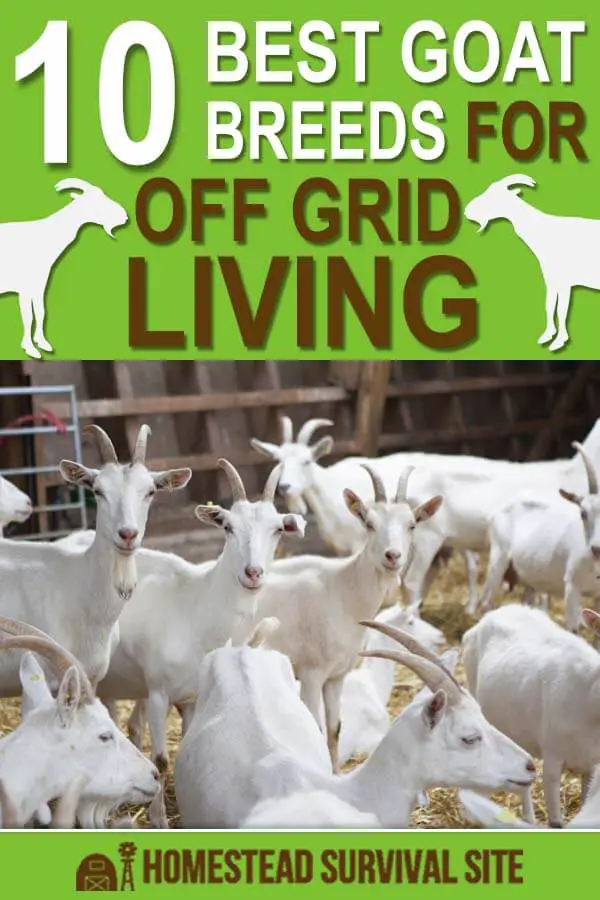


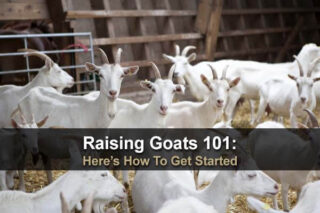


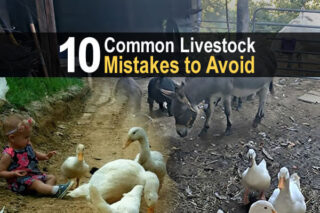


My brother has had 5 goats die in his pasture, I never thought of goat bloat.